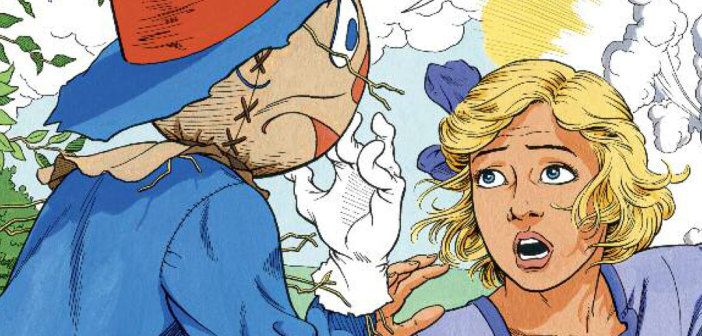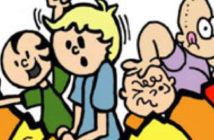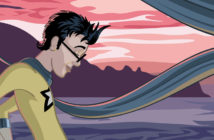t’s difficult to place Eric Shanower’s Little Adventures in Oz within the grand scheme of comic book things; the book’s accessibility and originality largely depends on just how much Oz any given reader needs in order to make it through the day. For me, Victor Fleming’s 1939 MGM film, The Wizard of Oz, as it was adapted from L. Frank Baum’s classic 1900 children’s novel, provides whatever fix of flying monkeys and ruby slippers I might ever need. But then, for added measure, I’ve always been especially fond of Return to Oz, the 1985 sequel directed by Walter Murch, who challenged the concept of the magical Land of Oz with dark imagery and narrative intensity.
Therein are the troubles of Little Adventures in Oz: the stories contained in the book are not challenging, nor overly unique. They act as supplementary material to the tales of Dorothy Gale already well-established in the collective imagination of literature and film. But that’s all they deliver: basic plots and old premises. How many times can Dorothy and her friends fall in and out of trouble?
The first volume of Little Adventures in Oz contains two stories: “The Enchanted Apples of Oz” and “The Ice King of Oz.” In the former, Dorothy, the Scarecrow, and Billina (a talking hen) discover the castle of Valynn, which suddenly reappears after fading away into an astral realm for countless years. Valynn is charged with protecting the Enchanted Apples, items that imbue all of Oz with its magic. But Valynn isn’t very good at her job, and she allows the apples to fall into the hands of the villainous wizard, Bortag.
“The Ice King of Oz” is the more entertaining of the two tales told, setting into motion an adventure far across the Deadly Desert on the Continent of Ice for Dorothy and her friends to tackle. A delegation is dispatched to Ozma, the young ruler of Oz, so that a treaty may be signed between her and the powerful Ice King. But the frozen ruler’s intentions aren’t honorable, and a kidnapping occurs that Dorothy, the Scarecrow, the Tin Man, and a new character named Flicker must make right.
This small volume of Oz stories isn’t a bad book, but it does raise the question of how much creative value do the fantasies of L. Frank Baum still possess? It’s a subjective inquiry, but keep in mind that Baum wrote his original novels roughly a century ago. The classics never die, but do they need to constantly be revived over and over again in place of new and original contemporary tales being created, hopefully to become classics of their own some day?
Perhaps a fresh visit to the Land of Oz with Dorothy and her compatriots would have been a warranted journey, but Shanower doesn’t modernize any aspect of the Baum formula. The characters are doe-eyed and one-dimensional, never failing to have an “awe, shucks” attitude in the most dangerous of situations. This problem isn’t helped with dialogue that oftentimes sounds hollow and robotic. It’s difficult to believe that these characters are as brave and adventurous as they are made out to be. Wouldn’t the evils that have creeped throughout Oz have hardened them after all of this time, even just a little?
I’m not familiar with the past works of Eric Shanower, but I wonder if IDW Publishing (the company releasing this book) would have given Shanower the opportunity to create a comic wholly fresh and original. Was Little Adventures in Oz completely Shanower’s idea, or was it IDW Publishing’s hook, wanting to ensure a title with some kind of marketable value? I’m not sure, but I do know that Shanower is talented: his comics have a classic look and feel to them, which would have been an interesting blend with a story reflecting original and contemporary trends and themes.
There will surely be some who enjoy Little Adventures in Oz, but it won’t appeal to a wide audience because of its textual limitations. It will be a friendly addition to the library of hardcore Baum fans, and may even serve as a worthy portal for young readers into the comics medium. But I’d much rather wait and see what original material Shanower produces in the future.
This comic book review originally appeared on Broken Frontier on 06 January 2010.




